The town of Sélestat is situated in the centre of Alsace in the Bas-Rhin, between Strasbourg (47kms) and Colmar (22kms), on the border with the département of Haut-Rhin.
With a population of 20,000, Sélestat displays a rich architectural heritage which includes several mansions and town-houses of Gothic, Renaissance and Baroque styles.
A Free Imperial City during the Middle-Ages part of the Décapole, the old town is worth a visit along the Alsace Wine Route that runs not far from its centre.
Discover Sélestat in French on our blog Mon Grand-Est
Sélestat: A Bit of History
Sélestat was mentioned for the first time in the 8th century but legend has it that it was founded by Sletto the giant, hence the German name of “Schlettstadt”.
The town enjoyed a long period of prosperity and economic wealth during the Middle Ages.

In 1217, Sélestat was granted the status of Free Imperial City and started the construction of fortifications.
In 1292, Emperor Adophe of Nassau approved the enforcement of a constitution in Sélestat to manage the territory.
In 1354, the city joined the Décapole, an alliance formed the same year by 10 Imperial cities of the Holy Roman Empire in Alsace which aimed to maintain their rights (Haguenau, Colmar, Wissembourg, Obernai, Kaysersberg, Rosheim, Munster, Sélestat, Mulhouse [until 1515], Seltz [1358-1418] and Landau [from 1521]).
At the end of the Middle Ages, Sélestat ranked amongst the largest towns in Alsace with a population estimated from 5,000 to 6,000 inhabitants.

The prosperity enjoyed by Sélestat partly explained the development of Renaissance Humanism at the beginning of the 15th century.
A local of Sélestat, Beatus Rhenanus, became a major humanist and classical scholar in Europe, having studied in Paris and lived in Strasbourg and Basel.
His invaluable collection of books was bequeathed to the city of Sélestat after his death.
The great humanist Erasmus of Rotterdam who was a close friend of Beatus Rhenanus visited Sélestat a number of times and wrote in praise of the town:
“Celebrated Sélestat […] what is the source of your genius, so fertile and so generous?“

With the events of the Wars of Religion, the prosperous era of Sélestat came to an end.
During the Thirty Years’ War, Sélestat was annexed for the first time by France in 1634.
The town became officially French in 1678 at the Treaty of Nijmegen.
From then on, Sélestat shared the events of the history of Alsace.
The Old Town of Sélestat
Sélestat displays a rich architectural heritage which includes several mansions and town-houses of Gothic, Renaissance and Baroque styles such as the Ebersmunster House (1543), the Ziegler House (1538) without forgetting the picturesque Tanner’s district with its half-timbered houses dating from the 15th and 16th centuries.
There are two magnificent churches in the old town: the Romanesque Sainte Foy Church (12th C) and the Gothic Saint Georges Church (13th-15th C).
St. Foy Church

The old Romanesque church was built in pink sandstone from the Vosges within 10 years from 1170 to 1180.
St. Foy was the abbey church for the Benedictine monks of Conques-en-Rouergue who settled in Sélestat in 1094.
The church has a basilica plan with a short transept and its style shares more similarities to those of Lorraine and Burgundy than to the Rhineland Romanesque art.
The church has three towers: two on the western façade with rhombic roofs and an octagonal one at the crossing of the transept topped with a stone spire.
The portal dates back to the second half of the 12th century and has kept all its original sculptures. The tympanum of the main portal was restored in 1890 by Charles Winkler.
The inside of the church contains some fine stained-glass windows, and an extravagant Baroque pulpit created in 1733. The organ was installed in 1892 by Martin Rinckenbach.


St. Georges Church

Situated a few meters from the Romanesque Church of St. Foy, the St. Georges Church was built from 1220 to 1490 in Gothic style.
The imposing structure of the church was intended to mark the growing wealth and power of the Bourgeois.
The Latin cross floorplan of the church includes a nave and two side aisles (completed in 1235), a transept and a choir (completed in the 15th century).

The 65 m high bell tower is topped with an octagon with pinnacles from the 14th century.
The inside of the church has a Baroque pulpit completed in 1619.
The choir contains a bay of seven remarkable stained-glass windows from 1430 to 1460.

Protestant Church

The protestant church of Sélestat meets in the former choir of the church that was part of the Franciscan Convent.
Built circa 1280, the tall and lean sanctuary is reminiscent of churches erected by the mendicant orders in the 13th century in Alsace (Colmar, Rouffach, Guebwiller).
The Gothic spire was added in 1430 and the entire church was renovated in the 19th century.
The Humanist Library

The Humanist Library of Sélestat is Alsace’s oldest public library.
It gathers two libraries: the Latin Library founded in 1452, and the personal library of Beatus Rhenanus (1485-1547), a humanist and close friend of Erasmus of Rotterdam.

It contains 450 manuscripts, 550 incunabula and 2,000 printing works from the 16th century.
The library keeps a record of the first written mention of the use of fir trees at Christmas (1521).
In 2011, the Humanist Library of Sélestat was listed in the Memory of the World Register by UNESCO.
Quai des Tanneurs
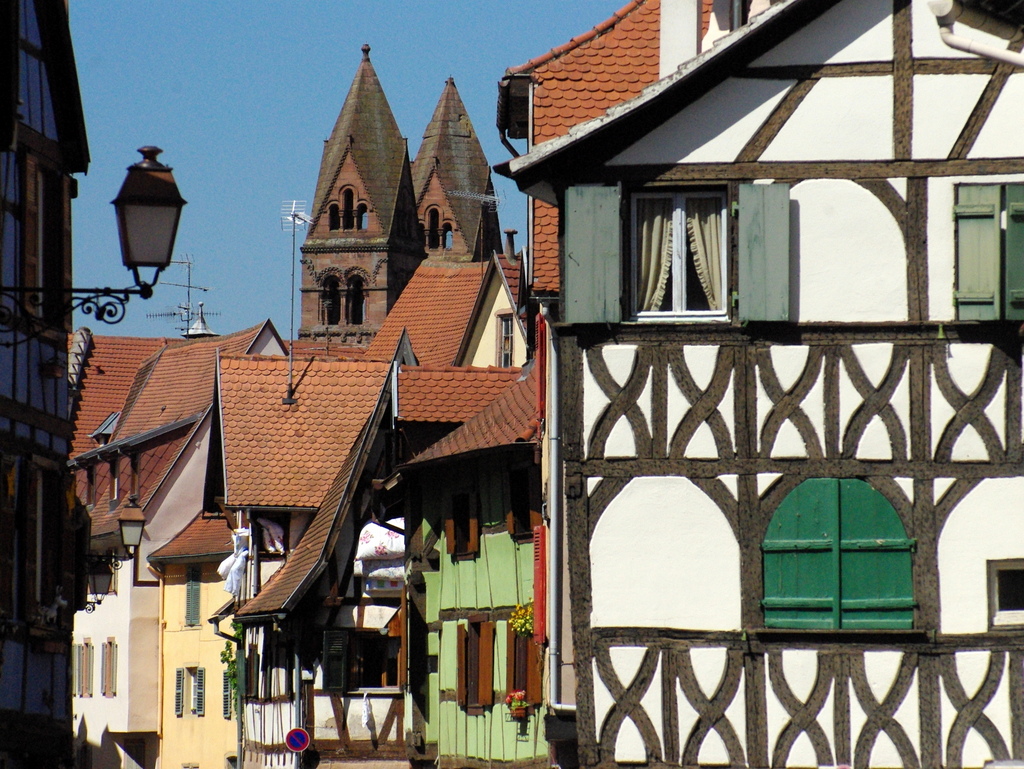
Situated in the southwest of the town, the old district of the tanners features many half-timbered houses dating back to the Middle Ages.
The street was lined by a stream until the beginning of the 20th century.
The houses have been built following a specific pattern: a ground floor in stone followed by a level in timber topped by long and steep roofs under which were treated the skins of animals.
The ramparts of Sélestat
The medieval wall of Sélestat was built and enlarged a number of times between the 13th and the 16th centuries before being dismantled in the 17th century following the annexation of the town by France.
A few traces remain of the medieval wall such as the Tour de l’Horloge and the Witches’ Tower.
Tour de L’Horloge

The Tour de l’Horloge (Clock Tower), also named Tour Neuve (New Tower), was one of the entrance gates into town and led to the Rue des Chevaliers.
It was built in the 13th century and was topped in 1614 by a lantern and bartizans.
Witches’ Tower

The Witches’ Tower (Tour des Sorcières) dates back to the 13th century and served as the North gate entrance to town.
The ground arcades were walled in the 17th century and the tower turned into a prison.
The Vauban Ramparts

In the 17th century, Sébastien Vauban was commissioned to construct a defence system at the forefront of that which was done at the time (only two bastions and a gate are still visible today).
Dating from that time, the Strasbourg Gate (1679) is situated next to the Witches’ Tower.

Rue des Chevaliers
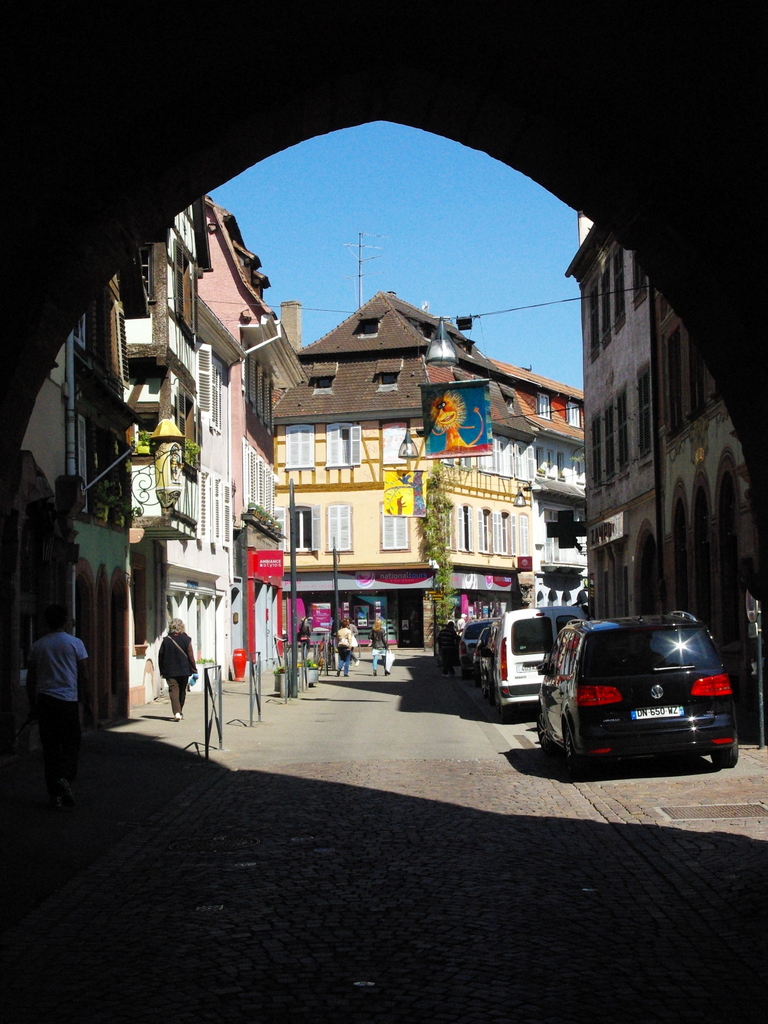
Sélestat’s main shopping street connects the Tour Neuve to the St. Georges Church.
This is one of Sélestat’s oldest streets bordered by a number of remarkable houses from the Middle Ages to the 18th century.
Some houses are half-timbered and others are embellished with trompe-l’oeil paintings and bay windows in the spirit of the Renaissance.


Mansions and places of interest
The old town of Sélestat has kept some fine mansions from the Middle Ages and Renaissance eras.
Hôtel d’Ebersmunster

Built in 1541, it served as a base for the monks of Ebersmunster.
Maison Ziegler

The mansion was built in 1540 and features a fine bay window in stone topped by a balcony.
Arsenal Sainte-Barbe
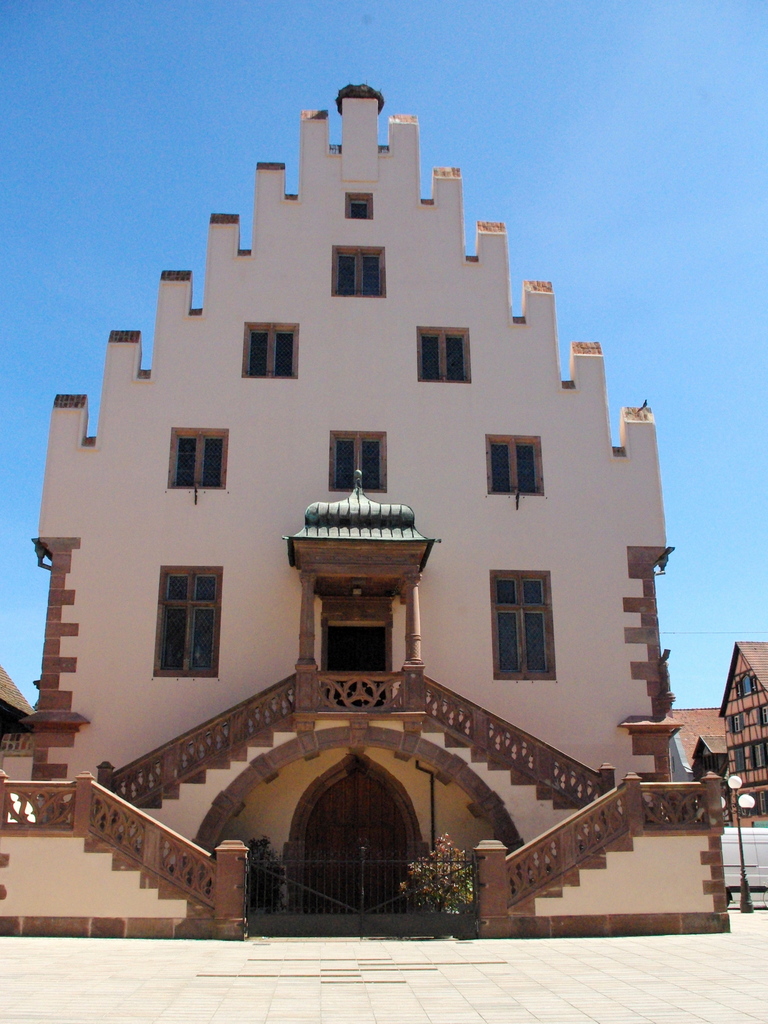
With its crow-stepped gable, the building dates back to circa 1470 and originally served as a municipal storehouse.
It became an arsenal in 1534.
The monumental exterior staircase – although in Renaissance style – was added in 1901 when the building became a municipal hall. It is similar to those in Molsheim and Mulhouse.
Maison “à la bourse – au bœuf”

The façade of this house built in 1678 on Rue des Chevaliers has a fine bay window in stone.
Place Gambetta

The charming little square is bordered by elegant houses.
One of them, built in 1569, had a Flemish gable added in 1625 and seems a little out-of-place in Alsace.
Surroundings of Sélestat
Sélestat is situated in central Alsace with many sights to discover in its surroundings.
The abbey-church of Ebersmunster
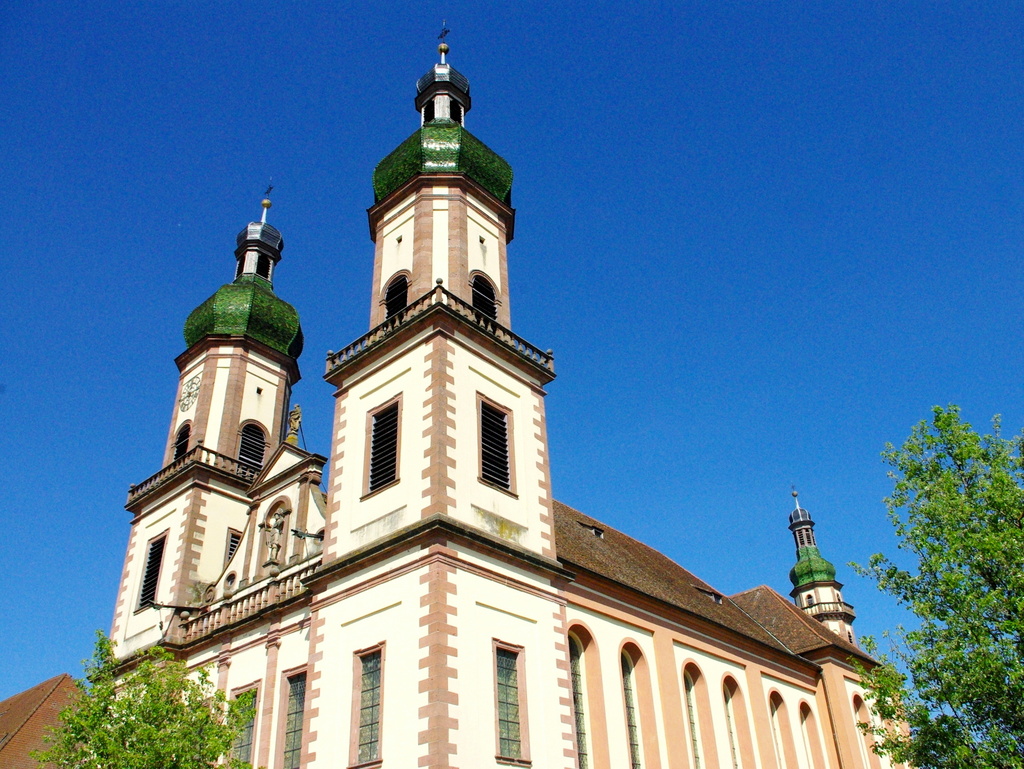

The Alsace Wine Route from Dambach to Kintzheim
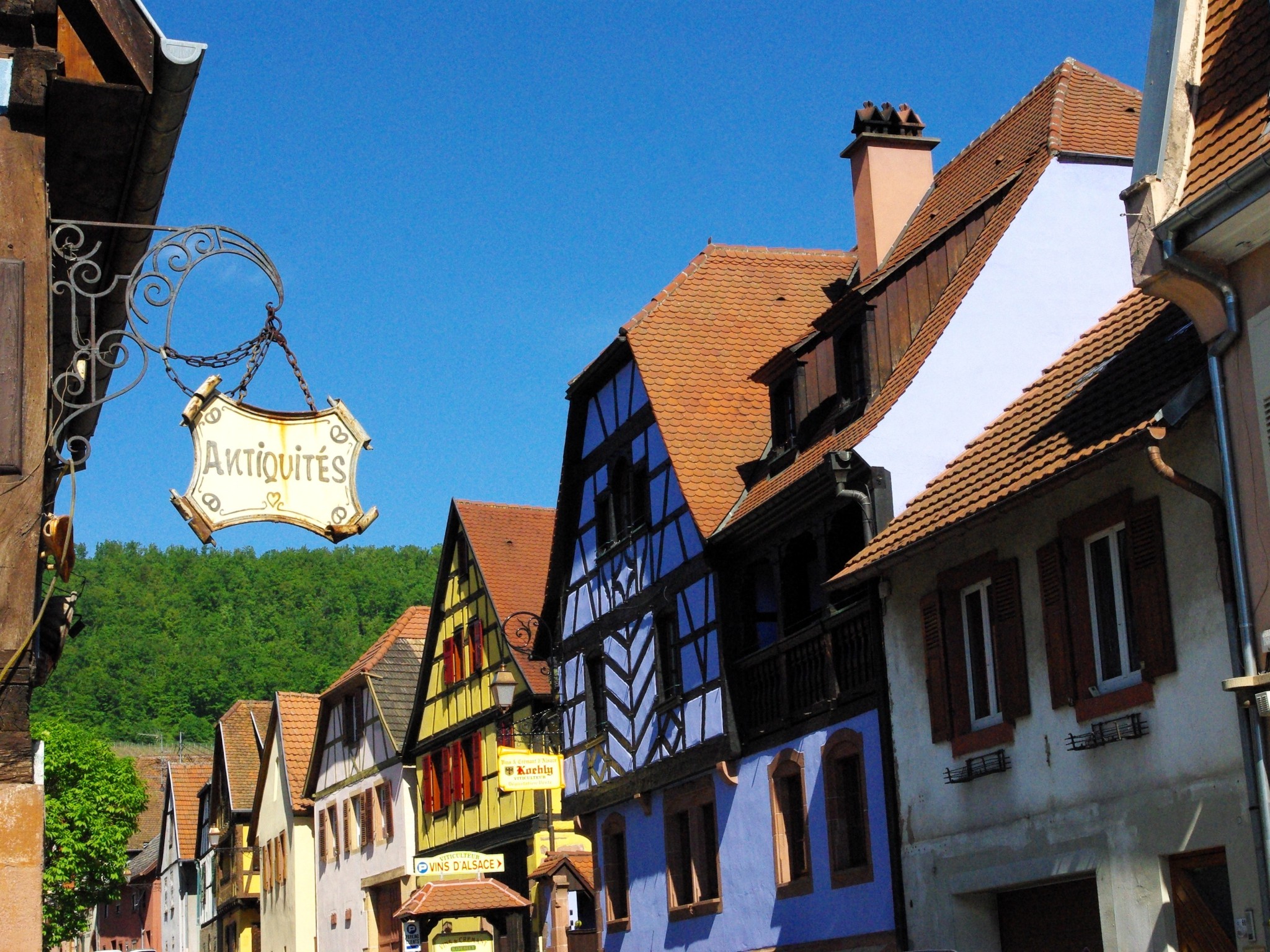
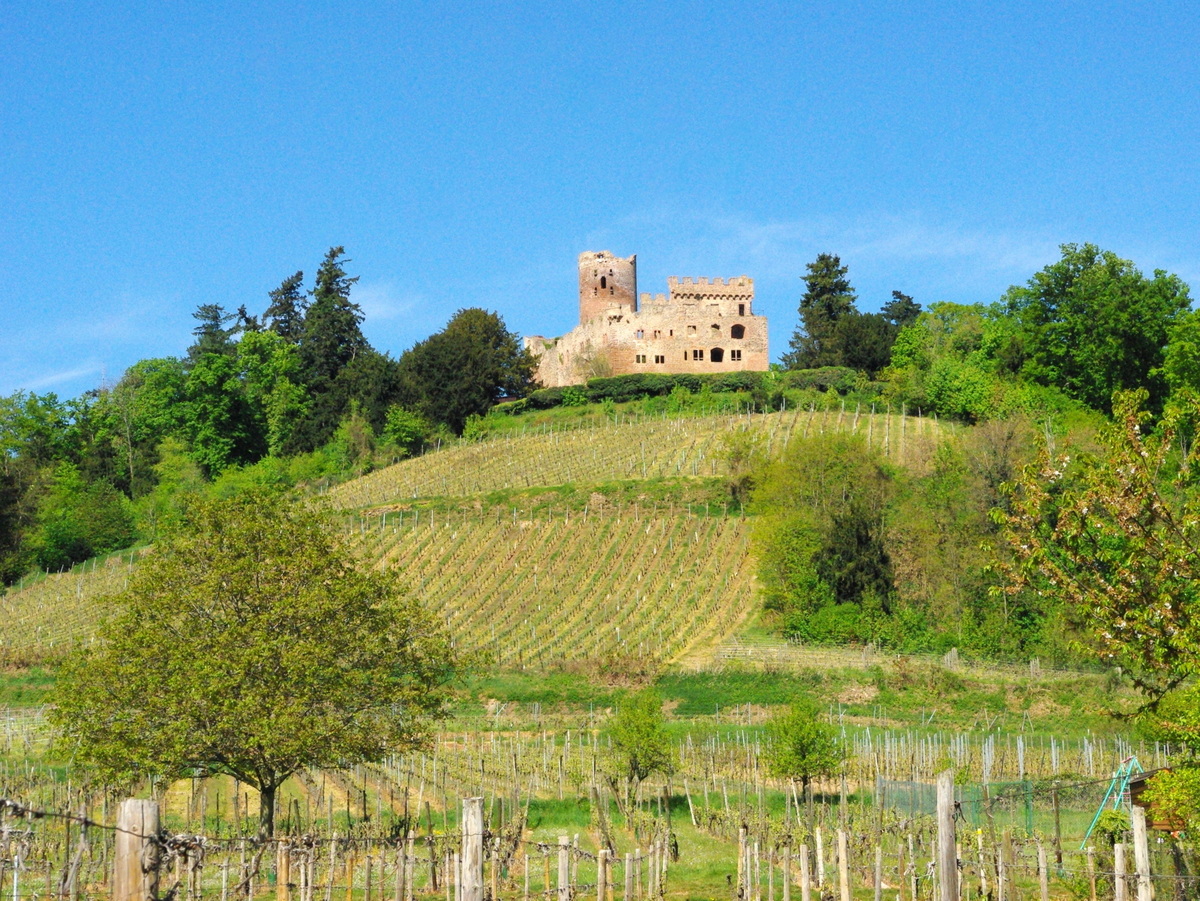
The Haut-Kœnigsbourg Castle
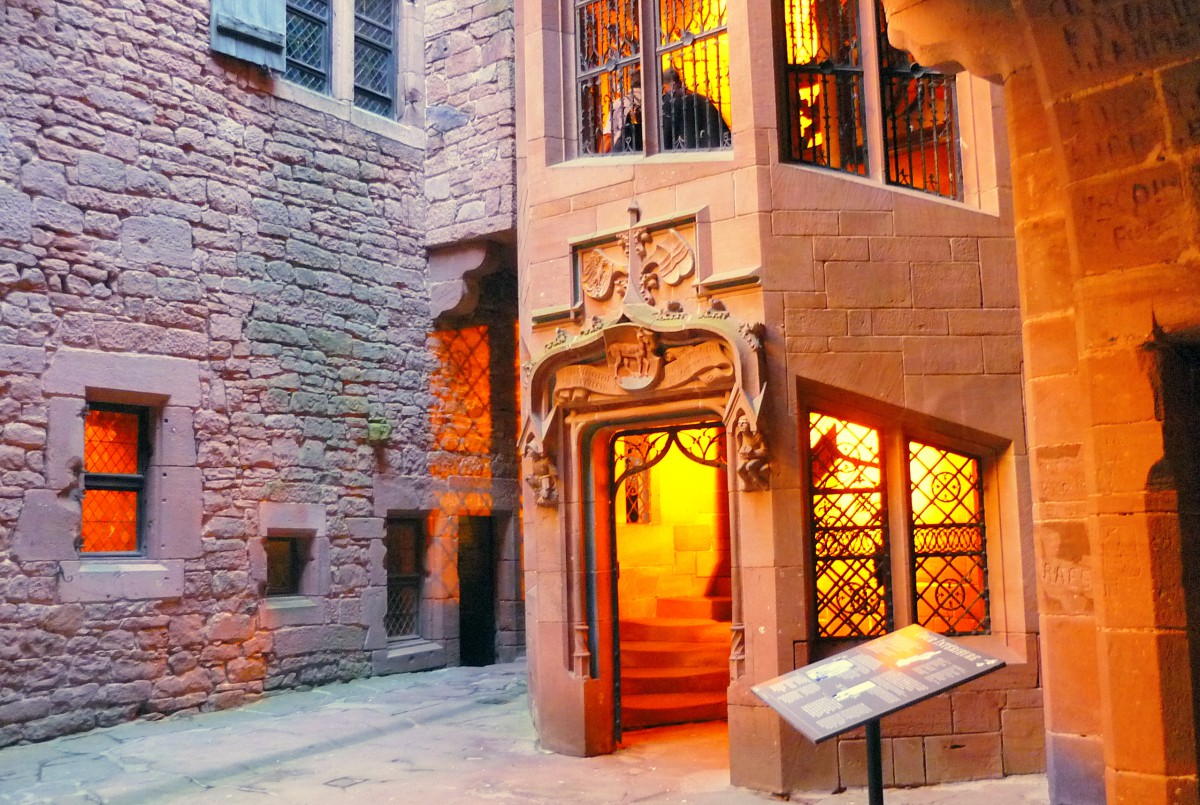

How to get to Sélestat
Sélestat is situated between Strasbourg (47kms) and Colmar (22kms) in the département of Bas-Rhin (Alsace).
By train
Sélestat is conveniently situated on the Mulhouse-Colmar-Strasbourg train line.
By car
Situated along the Strasbourg-Lyon axis, Sélestat is easily reached from Colmar (25km), Strasbourg (55 km), Mulhouse (65km), Basel (90km), and Nancy (130 km). Paris is 440 km distant from Sélestat.
By air
The closest international airports are Strasbourg-Entzheim (45km) and the Basel-Mulhouse-Freiburg Euroairport (80km) which are serviced by national and European airlines.
Read more about the region of Alsace.




